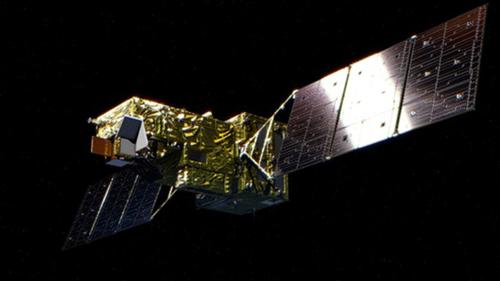Progress in Earth and Planetary Science ( IF 3.9 ) Pub Date : 2023-07-03 , DOI: 10.1186/s40645-023-00562-2 Ryoichi Imasu , Tsuneo Matsunaga , Masakatsu Nakajima , Yukio Yoshida , Kei Shiomi , Isamu Morino , Naoko Saitoh , Yosuke Niwa , Yu Someya , Yu Oishi , Makiko Hashimoto , Hibiki Noda , Kouki Hikosaka , Osamu Uchino , Shamil Maksyutov , Hiroshi Takagi , Haruma Ishida , Takashi Y. Nakajima , Teruyuki Nakajima , Chong Shi

|
The Greenhouse gases Observing SATellite 2 (GOSAT-2) was launched in January 2018 as a successor to GOSAT (launched in 2009), the first satellite to specialize in greenhouse gas observations. Compared to the GOSAT sensors, the sensors of GOSAT-2 offer higher performance in most respects. The quality and quantity of data from observations are expected to be improved accordingly. The signal-to-noise ratio (SNR) is better in both the SWIR and TIR bands of TANSO-FTS-2, which is the main sensor of GOSAT-2. This improvement ultimately enhances the accuracy of greenhouse gas concentration analysis. Furthermore, because of the improved SNR in the SWIR band, the northern limit at which data are obtainable in high-latitude regions of the Northern Hemisphere in winter, where observation data have remained unavailable because of weak signal strength, has moved to higher latitudes. As better data are obtained in greater quantities, progress in carbon cycle research for high-latitude regions is anticipated. Moreover, the improvement of SNR in the TIR band is expected to be considerable. Particularly, the resolutions of the vertical concentration distributions of CO2 and CH4 have been improved drastically. The first function introduced for GOSAT-2 that is not in GOSAT is an intelligent pointing mechanism: a cloud area avoidance function using the in-field camera of TANSO-FTS-2. This function can increase the amounts of observation data globally and can improve the accuracy of CO2 emissions estimation and measurements of uptake intensity. The effects are expected to be strong, especially for the tropics because cumulus clouds are the most common cloud type. The intelligent pointing system can avoid the clouds effectively. Another important benefit of TANSO-FTS-2 is that the wavelength range of Band 3 of SWIR has been expanded for measuring carbon monoxide (CO). Because CO originates from combustion, it is used to evaluate some effects of human activities in urban areas and biomass burning in fields. Particularly, black carbon-type aerosols can be measured by the sub-sensor, TANSO-CAI-2, to assess biomass burning along with CO2 and CO by TANSO-FTS-2.
中文翻译:

温室气体观测卫星 2 (GOSAT-2):任务概述
温室气体观测卫星 2 号 (GOSAT-2) 于 2018 年 1 月发射,作为 GOSAT(2009 年发射)的后继者,GOSAT 是第一颗专门从事温室气体观测的卫星。与GOSAT传感器相比,GOSAT-2传感器在大多数方面都提供了更高的性能。观测数据的质量和数量预计将相应提高。GOSAT-2的主要传感器TANSO-FTS-2在SWIR和TIR频段的信噪比(SNR)都较好。这一改进最终提高了温室气体浓度分析的准确性。此外,由于短波红外波段信噪比的提高,短波红外波段是北半球高纬度地区冬季可获得数据的北限,而该地区由于信号强度较弱而无法获得观测数据,已迁移至高纬度地区。随着获得更多、更好的数据,高纬度地区碳循环研究有望取得进展。此外,TIR 频段的信噪比有望得到显着改善。特别是CO垂直浓度分布的分辨率2和 CH 4得到了显着改进。GOSAT-2 引入的第一个 GOSAT 中没有的功能是智能指向机制:使用 TANSO-FTS-2 现场摄像机的云区避开功能。该功能可以增加全球观测数据量,提高CO 2的精度排放量估算和吸收强度测量。预计影响会很大,特别是对于热带地区,因为积云是最常见的云类型。智能指向系统可有效避开云层。TANSO-FTS-2 的另一个重要优点是 SWIR 波段 3 的波长范围已扩大,可用于测量一氧化碳 (CO)。由于 CO 源自燃烧,因此可用于评估城市地区人类活动和田间生物质燃烧的一些影响。特别地,可以通过子传感器TANSO-CAI-2测量黑碳型气溶胶,以通过TANSO-FTS-2评估生物质燃烧以及CO 2和CO。






























 京公网安备 11010802027423号
京公网安备 11010802027423号